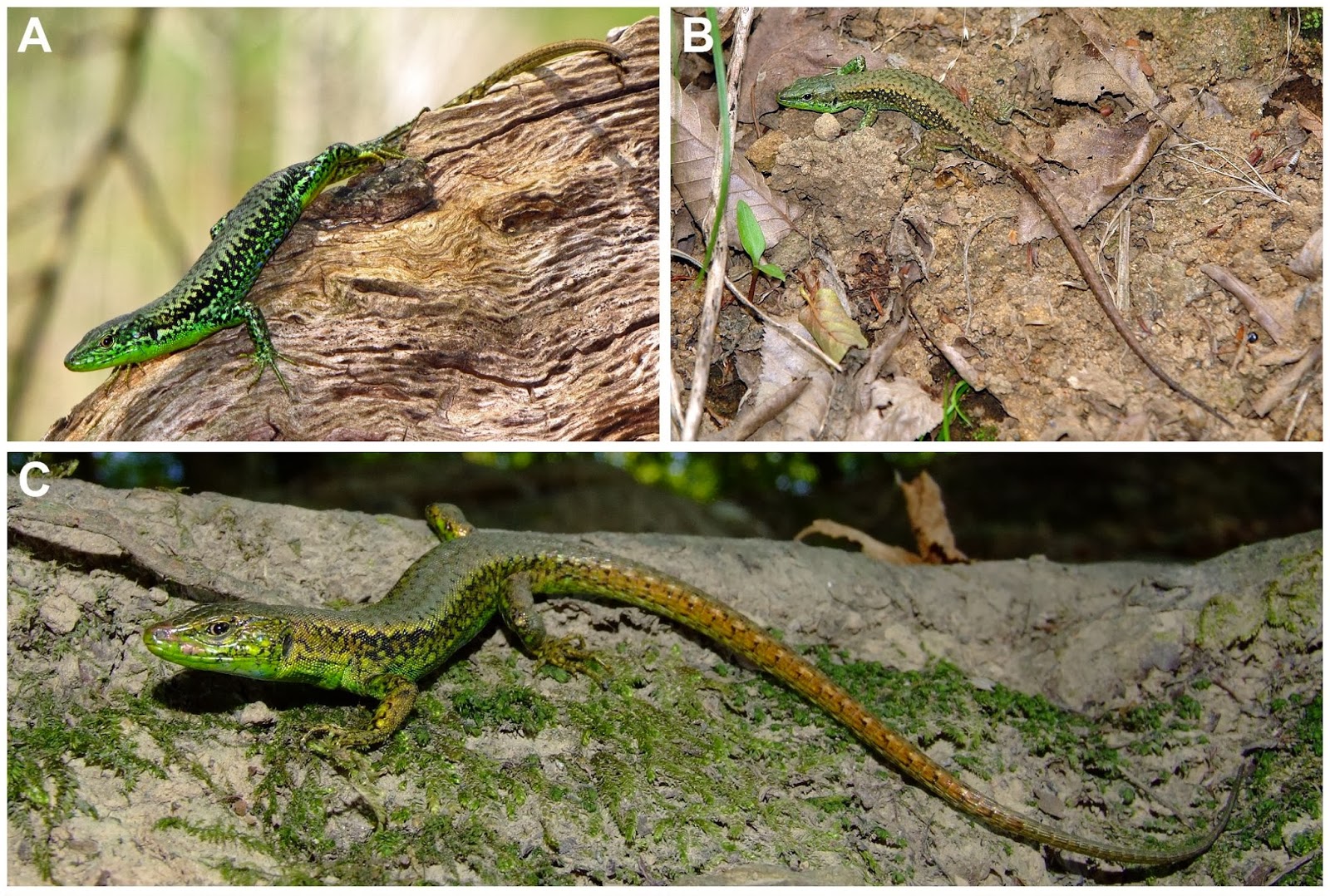Hypsiboas almendarizae sp. n. Common name: English: Almendariz’s treefrog; Spanish: Rana arbórea de Almendáriz
Etymology: The specific name is a noun in the genitive case and is a patronym for
Ana Almendáriz, Ecuadorian herpetologist who for more than three decades has contributed to the study of Ecuadorian amphibians and reptiles. Ana Almendáriz is curator of Herpetology in the Museo de Historia Natural Gustavo Orcés at Escuela Politécnica Nacional del Ecuador.
Distribution: Hypsiboas almendarizae occurs on the eastern Andean slopes of central and southern Ecuador (Morona Santiago, Napo, and Tungurahua provinces) (Fig. 15). Localities with known elevation range from 500 to 1950 m above sea level. The elevation at Río Hollín (1950 m) is the highest known locality for
Hypsiboas almendarizae, while Méndez (500 m) is the lowest.
Conservation status: Its distribution polygon has 14, 983 sq.km. Within this area, 4, 864 sq.km. (32.4%) of its habitat has been degraded by human activities, especially agriculture and cattle raising
(estimated from Ministerio de Ambiente del Ecuador 2013). Current habitat degradation within the range of Hypsiboas almendarizae is extensive and its increase may threaten its survival in the future. Therefore, we propose that
Hypsiboas almendarizae is assigned to the
Near Threatened category. Its distribution polygon overlaps with Parque Nacional Sangay, Parque Nacional Llanganates, and Parque Nacional Sumaco Napo-Galeras.
Hypsiboas maculateralis sp. n. Common name: English: Stained treefrog; Spanish: Rana arbórea manchada
Etymology: The specific name is derived from the Latin words
macula = stain, and
lateralis = lateral, in reference to the brown dark blotches on the flanks of these frogs.
Distribution and ecology: Hypsiboas maculateralis inhabits the Amazon basin of Ecuador (Napo, Orellana, Pastaza, and Sucumbíos provinces) and Peru (Región de Madre de Dios) (Fig. 17). Localities with known elevation range vary between 186 and 354 m of elevation. The elevation of Comunidad Santa Rosa (354 m) is the highest known and Santa Teresita (186 m) is the lowest.
Vegetation type of the Peruvian locality is Southwest Amazon Moist Forest.
Conservation status: The distribution polygon of
Hypsiboas maculateralis has an area of 209, 304 sq.km. Because its distribution range is large and includes extensive areas of undisturbed forest, we propose that
Hypsiboas maculateralis be assigned to the category
Least Concern.
Hypsiboas alfaroi sp. n.Common name: English: Alfaro’s treefrog; Spanish: Rana arbórea de Alfaro
Etymology: The specific name is a noun in the genitive case and is a patronym for
Eloy Alfaro Delgado, former Ecuadorian president (1897–1901 and 1906–1911) and leader of the liberal revolution in Ecuador. His government promoted the separation between church and state and the modernization of Ecuador by supporting education and large-scale systems of transportation and communication.
Distribution: Hypsiboas alfaroi occurs in the Ecuadorian northern Amazon region (Napo, Orellana, and Sucumbíos provinces; Fig. 15). Localities with known elevation range from 176 m (Nuevo Rocafuerte) to 350 m (Nueva Loja). Nuevo Rocafuerte is on the border between Ecuador and Peru; the occurrence of Hypsiboas alfaroi in Peru is highly likely.
Conservation status: The distribution polygon of
Hypsiboas alfaroi has 47, 524 sq.km. Within it, 4, 287 km2 (9.0%) have been degraded by human activities, especially agriculture and cattle raising
(estimated from Ministerio de Ambiente del Ecuador 2013). Because its distribution range is relatively large and has a low proportion of degraded habitat, we propose that
Hypsiboas alfaroi be assigned to the
Least Concern category.
Hypsiboas tetete sp. n.Common name: English: Tetete’s treefrog; Spanish: Rana arbórea de los Tetetes
Etymology: The specific name is a noun and refers to the
Tetete, a Western Tucanoan indigenous group that inhabited the Colombian and Ecuadorian Amazon. It was decimated by the rubber exploitation and became extinct during the 1970s (Wasserstrom et al. 2011). Its recent disappearance parallels the destruction of increasingly large areas of forest in the Ecuadorian Amazon with the ensuing decline of biodiversity.
Distribution and ecology: Hypsiboas tetete is distributed in the Ecuadorian (Provincia Napo) and Peruvian Amazon basin (Región Loreto) (Fig. 15). Known localities range in elevation from 180 m (San Jacinto) to 420 m (Jatun Sacha). It is likely to have a larger distribution. Unfortunately, the lack of distinctive morphological characters relative to Hypsiboas alfaroi, preclude the unequivocal identification of museum specimens not associated with advertisement calls or genetic data. All specimens from Comunidad Santa Rosa and Jatun Sacha were found in flooded areas, in secondary forest, roosting on vegetation, 50 to 80 cm above ground.
Vegetation type for the Ecuadorian localities is Amazonian Lowland Evergreen Forest characterized by high plant alpha-diversity and a canopy of 30 m with emergent trees that reach 40 m.
Vegetation type at the Peruvian locality is Napo Moist Forest.
Conservation status: The distribution polygon has 2, 950 sq.km. of which 106 (3.5%) have been degraded by human activities
(estimated from Ministerio de Ambiente del Ecuador 2013). Because its known distribution range is small with less than five localities and habitat degradation is increasing,
Hypsiboas tetete is assigned to the
Endangered category under criteria B1ab(iii).




_caspica-(b)_chlorogaster-(c)_kamii-(d)_defilippii-(e)_kopetdaghica-(f)_schaekeli-(g)_steineri.jpg)
_caspica-(b)_chlorogaster-(c)_kamii.jpg)
_defilippii-(e)_kopetdaghica-(f)_schaekeli-(g)_steineri.jpg)

















































